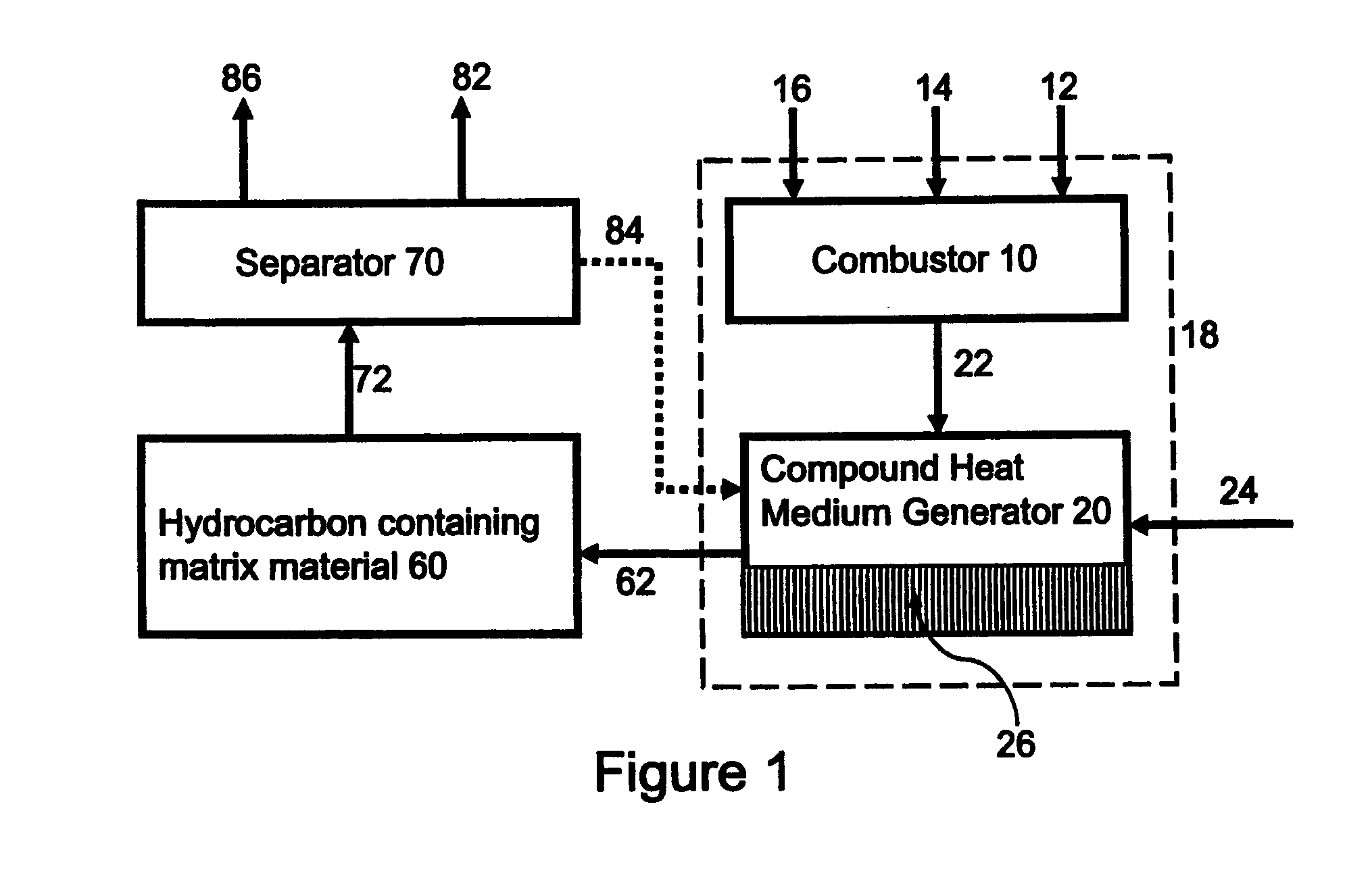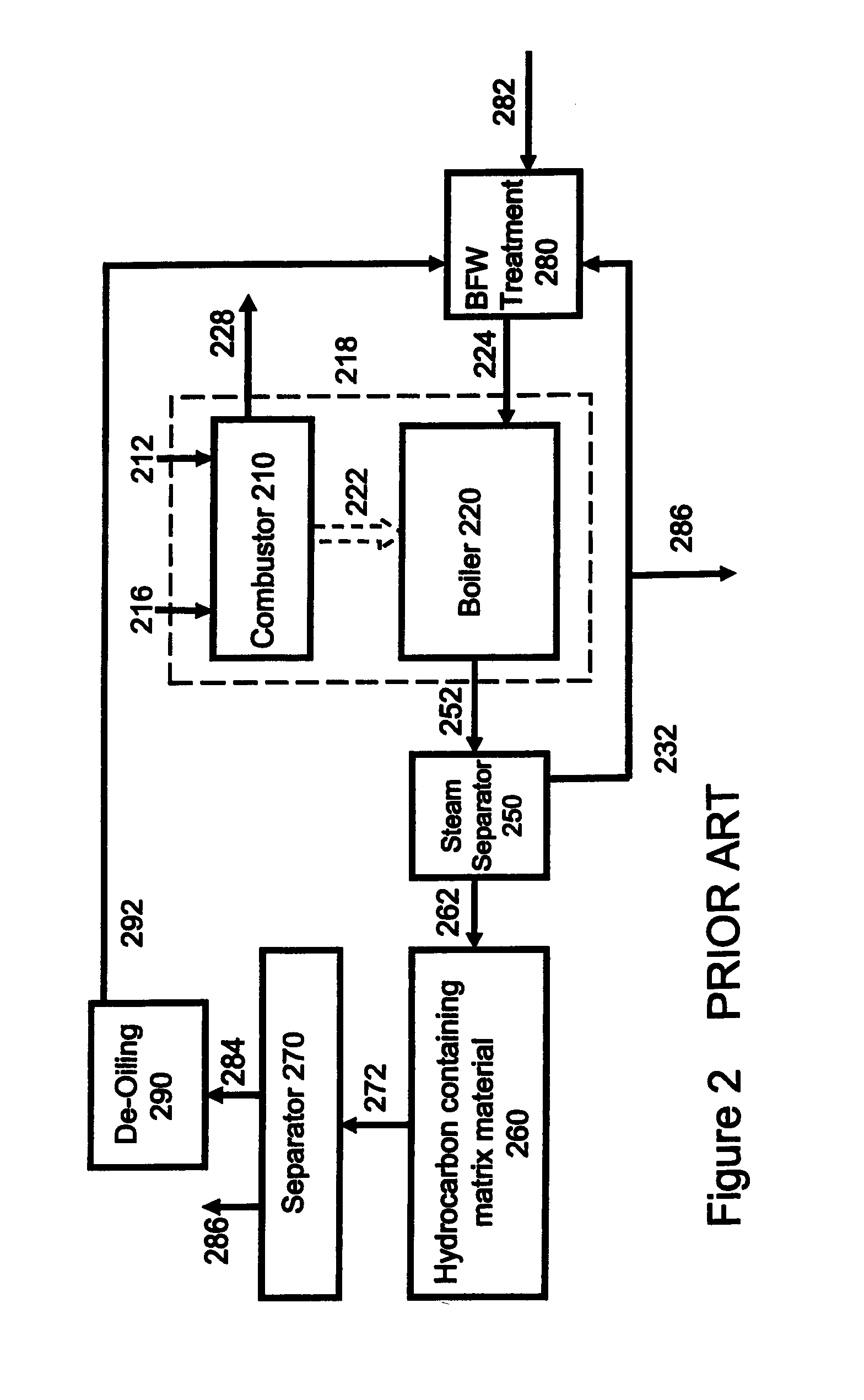Systems and Methods for Low Emission Hydrocarbon Recovery
a hydrocarbon recovery and low-emission technology, applied in the field of systems and methods for low-emission hydrocarbon recovery, can solve the problems of high operating expenditure (opex), significant emissions, particulate matter, and water consumption per barrel of css and steam assisted gravity drainage, and achieve the effects of improving the recovery and reuse of water, reducing emissions and other environmental impacts, and being more economical
- Summary
- Abstract
- Description
- Claims
- Application Information
AI Technical Summary
Benefits of technology
Problems solved by technology
Method used
Image
Examples
Embodiment Construction
[0054]With reference to the figures, embodiments of systems and methods will be described with application for low emission hydrocarbon recovery. In particular systems and method are provided for in situ hydrocarbon production, and production of heavy oil, or other hydrocarbons, in situ or from mined materials. The systems and methods described are both commercially advantageous and environmentally superior over past methods of hydrocarbon recovery.
[0055]As shown in FIG. 1, a first embodiment of the system 100, comprises compound heat medium generating system 18, having a first chamber or zone, i.e. combustor 10, which receives a fuel 12 (e.g. naturally occurring fossil fuels such as natural gas, anthracite, coal, sub-bituminous coal, lignite, and peat; hydrocarbon derived fuels such as atmospheric or vacuum residuals, asphaltene, pitch, char, and coke; refuse derived fuels such as wood waste; municipal solid waste such as sewage; synthetic fuels such as syngas, or mixtures thereof)...
PUM
 Login to View More
Login to View More Abstract
Description
Claims
Application Information
 Login to View More
Login to View More - R&D
- Intellectual Property
- Life Sciences
- Materials
- Tech Scout
- Unparalleled Data Quality
- Higher Quality Content
- 60% Fewer Hallucinations
Browse by: Latest US Patents, China's latest patents, Technical Efficacy Thesaurus, Application Domain, Technology Topic, Popular Technical Reports.
© 2025 PatSnap. All rights reserved.Legal|Privacy policy|Modern Slavery Act Transparency Statement|Sitemap|About US| Contact US: help@patsnap.com



